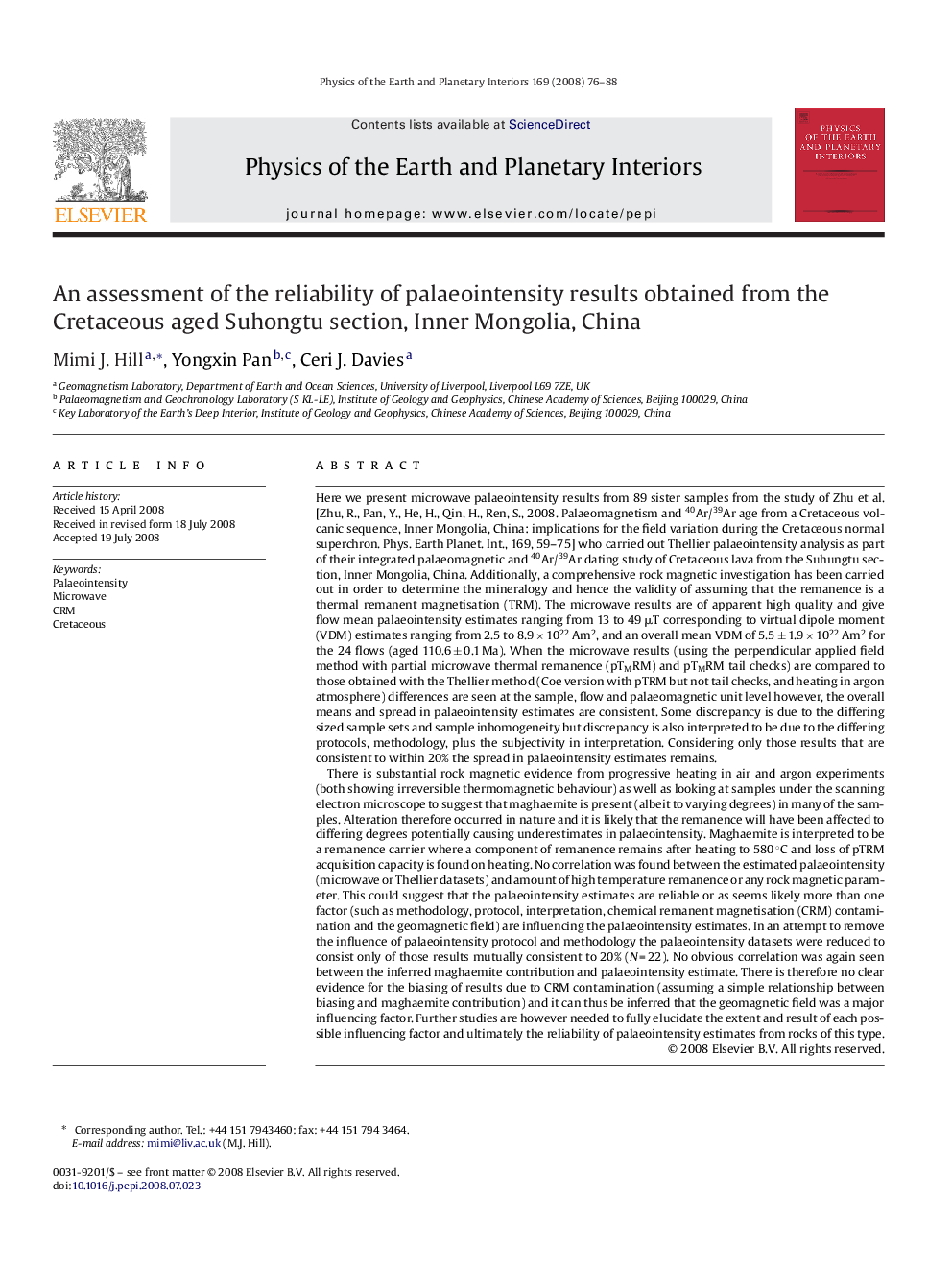| کد مقاله | کد نشریه | سال انتشار | مقاله انگلیسی | نسخه تمام متن |
|---|---|---|---|---|
| 4742633 | 1641578 | 2008 | 13 صفحه PDF | دانلود رایگان |
عنوان انگلیسی مقاله ISI
An assessment of the reliability of palaeointensity results obtained from the Cretaceous aged Suhongtu section, Inner Mongolia, China
دانلود مقاله + سفارش ترجمه
دانلود مقاله ISI انگلیسی
رایگان برای ایرانیان
موضوعات مرتبط
مهندسی و علوم پایه
علوم زمین و سیارات
فیزیک زمین (ژئو فیزیک)
پیش نمایش صفحه اول مقاله

چکیده انگلیسی
There is substantial rock magnetic evidence from progressive heating in air and argon experiments (both showing irreversible thermomagnetic behaviour) as well as looking at samples under the scanning electron microscope to suggest that maghaemite is present (albeit to varying degrees) in many of the samples. Alteration therefore occurred in nature and it is likely that the remanence will have been affected to differing degrees potentially causing underestimates in palaeointensity. Maghaemite is interpreted to be a remanence carrier where a component of remanence remains after heating to 580 °C and loss of pTRM acquisition capacity is found on heating. No correlation was found between the estimated palaeointensity (microwave or Thellier datasets) and amount of high temperature remanence or any rock magnetic parameter. This could suggest that the palaeointensity estimates are reliable or as seems likely more than one factor (such as methodology, protocol, interpretation, chemical remanent magnetisation (CRM) contamination and the geomagnetic field) are influencing the palaeointensity estimates. In an attempt to remove the influence of palaeointensity protocol and methodology the palaeointensity datasets were reduced to consist only of those results mutually consistent to 20% (N = 22). No obvious correlation was again seen between the inferred maghaemite contribution and palaeointensity estimate. There is therefore no clear evidence for the biasing of results due to CRM contamination (assuming a simple relationship between biasing and maghaemite contribution) and it can thus be inferred that the geomagnetic field was a major influencing factor. Further studies are however needed to fully elucidate the extent and result of each possible influencing factor and ultimately the reliability of palaeointensity estimates from rocks of this type.
ناشر
Database: Elsevier - ScienceDirect (ساینس دایرکت)
Journal: Physics of the Earth and Planetary Interiors - Volume 169, Issues 1â4, August 2008, Pages 76-88
Journal: Physics of the Earth and Planetary Interiors - Volume 169, Issues 1â4, August 2008, Pages 76-88
نویسندگان
Mimi J. Hill, Yongxin Pan, Ceri J. Davies,